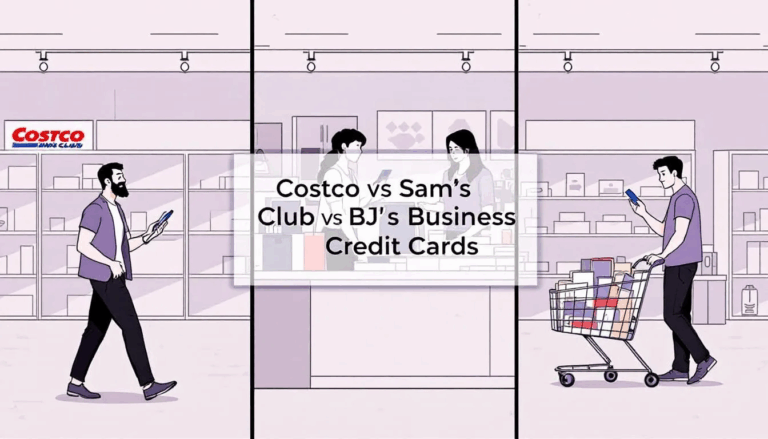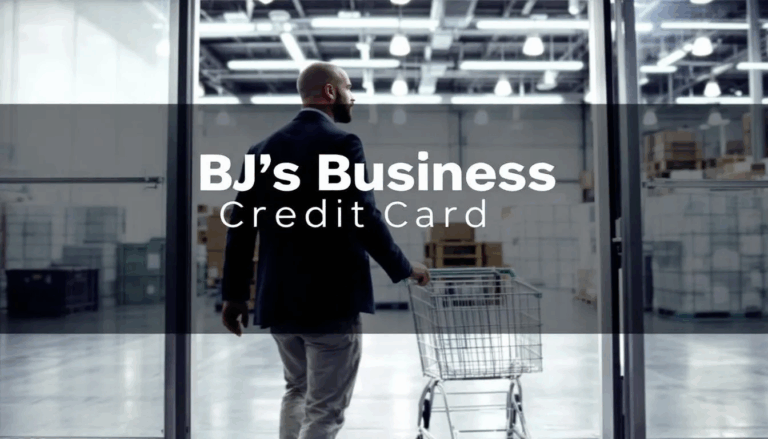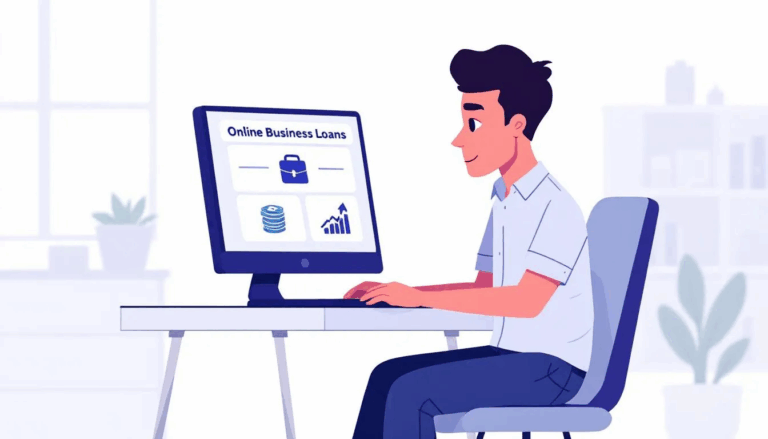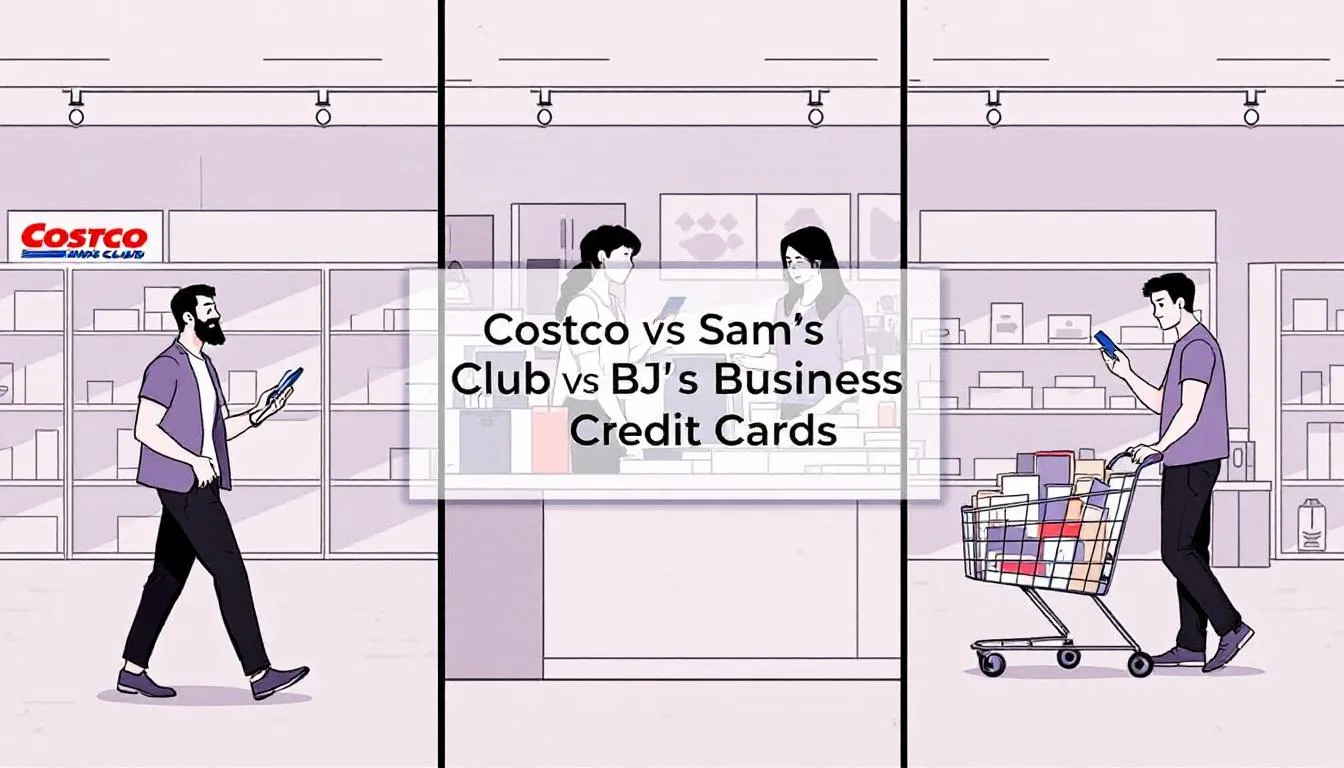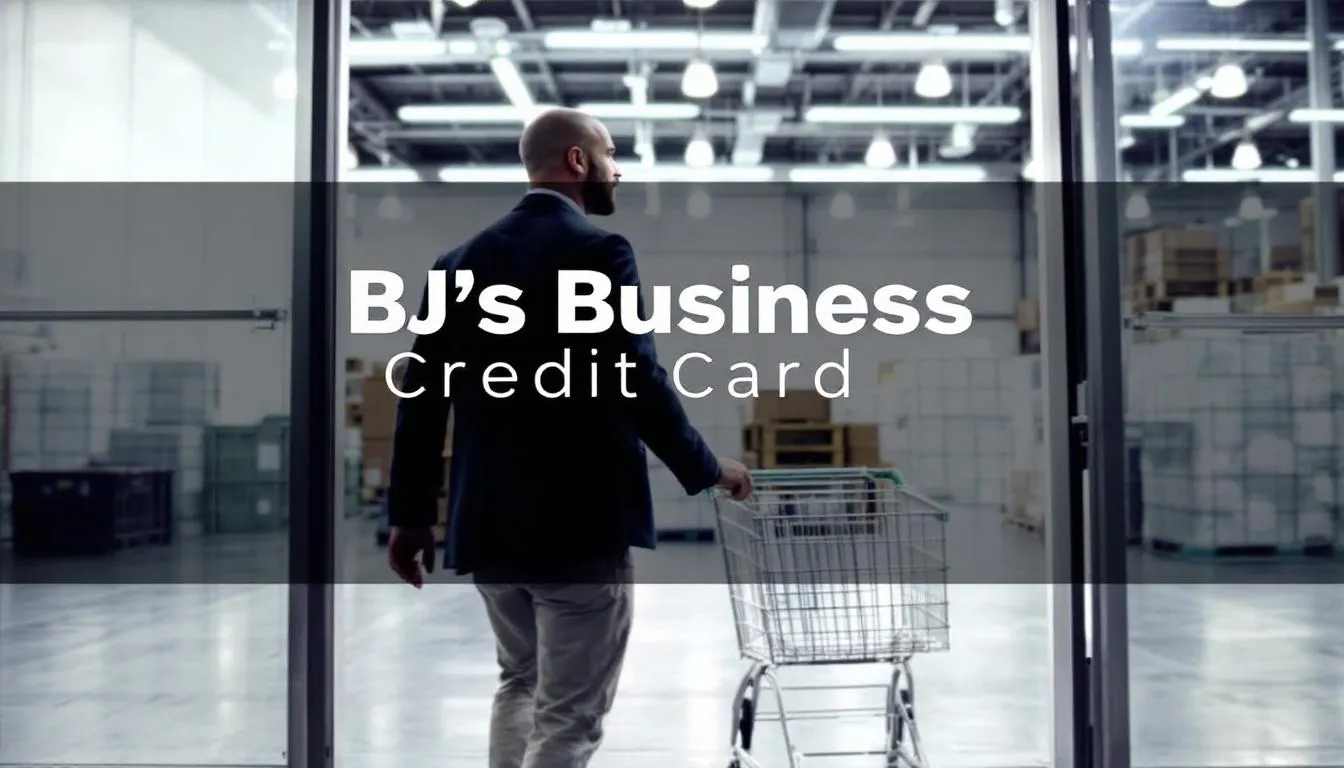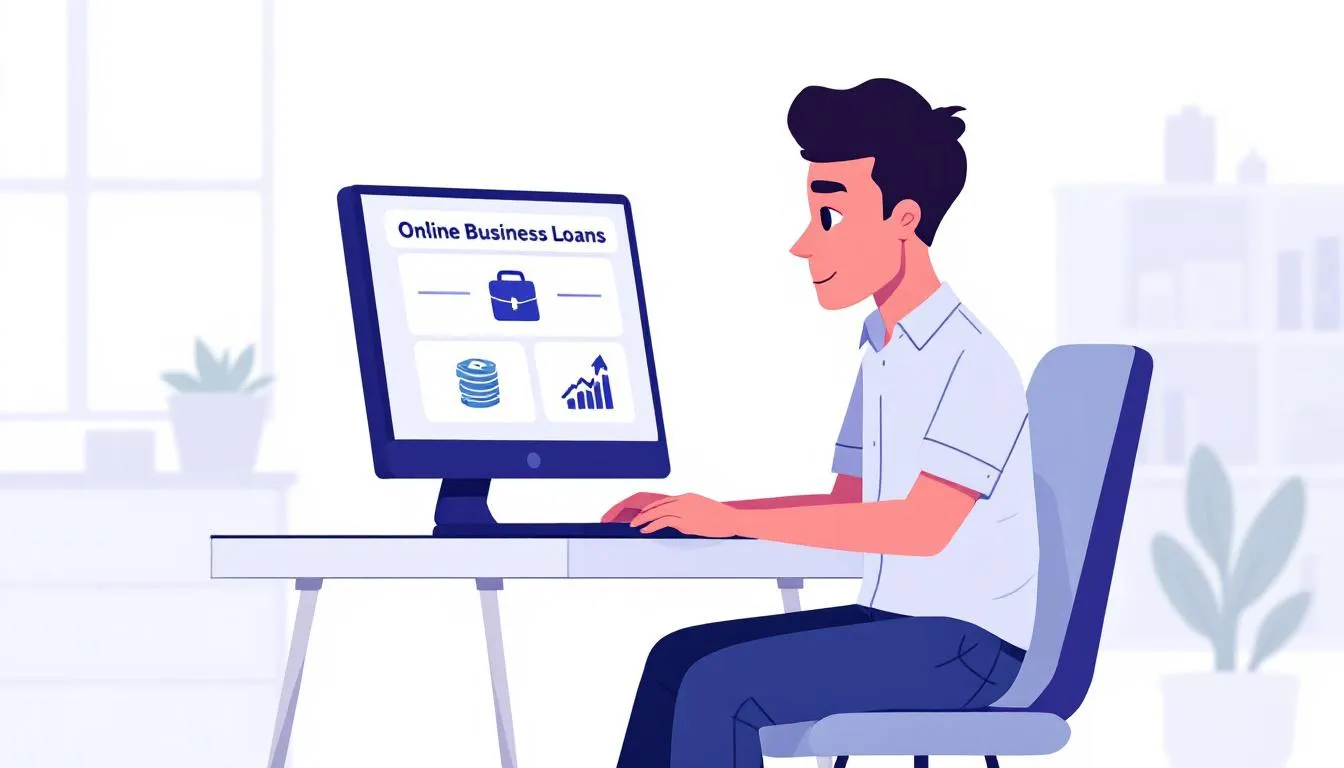What is a Bad Credit Score for Business Loans?
A bad credit business loan is a specialized form of funding designed to help small business owners with low credit obtain the capital they need. The funding options help move a business forward when other options aren’t available. These loans typically feature lower eligibility requirements and flexible repayment terms. Minimum credit scores for business loans can vary by lender but often start at around 500.
When business lenders review your loan application, they typically consider both your personal credit history and your business credit score. If you haven’t established a business credit history yet, your personal credit score is given more weight.
Personal Credit Score
Most people are familiar with their personal credit score, as it plays a significant role in obtaining loans and credit cards. Your credit score is a substantial factor in determining eligibility for mortgages, car loans, rental leases, and personal loans.
Personal credit scores are most commonly represented as a FICO® credit score. The three major credit bureaus —Experian, TransUnion, and Equifax —all produce credit reports that impact your FICO score, which ranges from 300 to 850. Each bureau might have a different FICO score.
The ranges for personal credit scores are as follows:
- Excellent: 800+.
- Very good: 740-799.
- Good: 670-739.
- Fair: 580-669.
- Poor: 300-579.
As you can see, a bad or poor credit score is one that is 579 or below. However, some lenders might consider FICO scores up to 670 as risky.
Each lender creates its own credit score scale. Some might set a cutoff at 650, while others go as low as 500.
Something to remember: A good to excellent credit score is not a guarantee of approval, but it opens the door to more options and lower interest rates. Similarly, a fair to poor credit score doesn’t mean you can’t get funding, but your options are more limited, and interest rates are higher.
Business Credit Scores
Business credit scores operate slightly differently from personal credit scores. The three major business credit bureaus are Experian Business, Equifax Business, and Dun & Bradstreet (D&B).
Many business credit bureaus use a scale of 1-100, but have slightly different cutoffs for a good or bad score. Generally, you’ll want a business credit score of 80 or above.
Some credit bureaus use a different scale to measure a business’s credit. For example, Equifax’s Small Business Credit Risk Score for Financial Service uses a score range of 101-992.
Small businesses are also subject to the FICO® Small Business Scoring Service™ (SBSS), primarily used in SBA loans. The SBSS aggregates the personal credit scores of up to five business owners (each with a minimum of 20%), the business credit score of the company, and financial data provided on Forms 1919 and 1920. SBSS scores range from 0 to 300, and most businesses require a score of 155 to qualify.
See our essential guide on how to establish and grow business credit.
What Business Loans are available with Bad Credit?
Most traditional loans require a higher personal credit score, but several alternative lenders specialize in helping credit-challenged business owners secure funding. Bad credit business loans through United Capital Source’s lender network have the following features:
- Max funding amount: $5k – $5 million
- Factor rates: Starting at 1-6% p/mo
- Term: 3 months – 5 years
- Funding speed: 1-3 business days
A low credit score will decrease the available business loan options. In addition, the available loans likely have the following limitations:
- Lower total borrowing amounts
- Higher interest rates and processing fees.
- Shorter terms
- Frequent payment schedules
These are essential factors to consider when managing expectations while pursuing business loans with bad credit. That being said, here are some available small business loan options for bad credit.
Business Line of Credit
A business line of credit (LOC) is a flexible financing product that provides funds as an available credit limit, rather than a lump sum disbursement. A small business owner can draw funds up to the credit limit as needed.
You only pay interest on the funds you draw. Most business lines of credit are revolving, meaning the credit limit replenishes as you repay the draw, similar to a credit card.
A business credit line is excellent for covering unexpected costs and smoothing cash flow gaps for a seasonal business. Examples include ongoing projects, emergencies, and seizing time-sensitive opportunities.
Lines of credit are accessible to borrowers with bad credit due to their flexibility. However, you might have a higher interest rate. Business line of credit rates can be expressed as an APR (Annual Percentage Rate) or a factor rate.
Equipment Financing
Most businesses require commercial equipment at some point, whether it is general equipment such as computers, cash registers, and point-of-sale systems, or specialized equipment like construction vehicles, medical equipment, and landscaping equipment. The challenge is that these pieces of machinery can be costly.
Equipment financing enables small businesses to acquire necessary equipment on credit. You’ll most likely submit the invoice from the equipment vendor with your application. Once approved, the lender sends the funds directly to the vendor to purchase the equipment, which is then installed.
The lender holds a lien on the equipment, allowing you to use it while you pay it off in fixed payments. Equipment loan payments are typically made monthly, but can also be made daily, weekly, or bi-weekly, especially for borrowers with lower credit scores.
The equipment is the loan collateral, which is why the lender holds a lien on it. If the borrower defaults, the lender repossesses the equipment in compensation. This is known as a self-collateralized loan. You may be familiar with other self-collateralized consumer loans, such as mortgages or car loans.
Bad credit borrowers typically have an easier time accessing equipment financing because the collateral is built into the loan. Lenders take less risk. Additionally, the business equipment should theoretically enable the company to generate more revenue, thereby increasing the likelihood of repayment.
Merchant Cash Advance
Merchant cash advances (MCAs) are among the most accessible business funding products available. That’s large due to their structure and repayment terms.
With an MCA, the small business owner receives a large lump sum of money, usually based on previous sales history. The borrowing amount is repaid with a percentage of future sales. Since the merchant cash advance is based on sales, funders typically don’t consider credit as heavily.
The drawbacks to MCAs are that they can be expensive, usually have short terms, and require daily or weekly payments. Daily is more common. Since repayment is derived from your sales, it can strain your cash flow if you’re not careful.
Working Capital Loans
A working capital loan is typically a short-term, unsecured financing arrangement designed to address a temporary shortage of working capital (also known as operating capital). Working capital loans are sometimes referred to as cash flow loans.
Operating capital refers to the funds your business uses for day-to-day operations and expenses. Examples include payroll and rent.
Working capital loans are typically used to cover unexpected costs or circumstances. As a result, lenders usually approve and fund these loans promptly.
The tradeoff is that working capital loans often have high interest rates. That’s one of the primary reasons they’re accessible to business owners with less-than-stellar credit.
Accounts Receivable Factoring
Accounts receivable factoring is a funding arrangement that lets businesses that sell on credit convert unpaid customer invoices into working capital. It’s also known as accounts receivable financing, accounts receivable factoring, or invoice financing.
The process involves working with a third-party financial services provider, commonly referred to as a factoring company or factor. The company sends your business an advance based on a percentage of the invoice’s value. This is called the advance rate; most advance rates range from 75% to 95%.
Once the factoring company issues the advance, it owns the invoice and collects payment from your customer(s). After receiving payment, the factoring company releases the remaining amount minus its fee.
One of the reasons accounts receivable (A/R) factoring is accessible is that it’s not a loan. The factoring company is purchasing the invoice at a discount. The fee it charges is referred to as the factoring fee or discount rate. Most factoring rates range from 1% to 6%.
Another reason low credit business owners can get approved for factoring is that repayment comes from your customers, not you. However, that means factoring companies typically run credit checks on your customers to determine the likelihood of repayment.
Other available options include business term loans and SBA loans. However, these usually require good to excellent credit.
What are the advantages of Bad Credit Business Loans?
The primary benefit of bad credit business loans is accessibility. You won’t be denied a loan due to poor credit if your business has a healthy cash flow. Strong sales can also help decrease the effect of bad credit on loan costs and terms.
You can use the funds to pay off existing debt, one of the leading causes of bad credit. However, ensure the loan you receive allows for refinancing debt, as some lenders restrict your use of the funds.
Taking out a loan and making timely payments can also help improve your credit. Not every business lender reports to the credit bureaus, so look for one that does. Even if the loan isn’t reported, successfully paying off one loan will increase your approval odds for a second larger loan with better rates and terms.
Alternative lenders are the primary source of bad credit business loans. Most offer convenient online applications with a fast turnaround for approval and funding.
What are the disadvantages of Bad Credit Business Loans?
The most significant drawback is the cost. Low credit scores typically result in higher interest rates. Some lenders may also charge higher fees.
Another disadvantage is that bad credit business loans are usually short-term. Lenders want to mitigate the risk associated with lending to a borrower with bad credit, and shorter terms mean the lender only carries the risk for a brief time.
Some bad credit business loans require a personal guarantee, which is a promise to repay the loan if the business defaults on its obligations. Personal guarantees circumvent limited liability protections, enabling lenders to pursue your personal assets.
Borrowers also face the risk of taking out the wrong bad credit business loan. Payments for these loans are supposed to be easy. However, some business loans for bad credit require more frequent payments, typically on a daily or weekly basis.
If a borrower takes out a loan with a repayment structure that isn’t conducive to their cash flow, it can create issues with repayment or working capital. Those issues could derail your operations or cause you to miss loan payments, further exacerbating poor credit. When a small business owner has exhausted their financing options, the pressure can result in rushing into an incorrect or suboptimal business loan.
Pros & Cons
Pros:
- Accessible financing for borrowers with a low credit score.
- Could potentially help build or repair credit with timely payments.
- It might be possible to use the funds to pay off existing debt.
- Quick and easy online applications.
- Usually fast approval and funding times.
Cons:
- Higher interest rates & fees than conventional loans.
- Lower borrowing amounts than traditional business loans.
- Typically short-term financing with frequent repayments.
- Might require collateral or a personal guarantee.
- Could require automatic payment withdrawals.
- Fewer options for lenders and loan types.
How to apply for a Bad Credit Business Loan:
You can apply for a bad credit business loan request with our lender network. Approved businesses we work with typically meet the following minimum requirements:
- Credit score: 475+.
- Time in business: 6+ months.
- Annual revenue: $240k.
Follow these steps to apply.
Step 1: Choose the Right Product
Bad credit business loans come in many forms. To choose the right small business loan, consider which borrowing terms pose the least risk for your cash flow. Is your business highly seasonal? Are you prone to occasional revenue dips? Would a business line of credit, term loan, or merchant cash advance help you build your business? It would be best to consider the funds’ intended purpose, as this directly affects how long it will take you to repay them.
Step 2: Gather Your Documents
Depending on the bad credit business loans available, you may need the following documents and information:
- Voided business check.
- Bank statements (3 Months).
- Credit card processing statements (3 Months).
- Accounts receivable aging report.
- Accounts payable report.
- Driver’s license.
Step 3: Complete Application
You can begin the application process by calling us or filling out our one-page online application. Either way, you’ll be asked to enter the information from Step 2 above, along with your desired borrowing amounts.
Step 4: Speak to a Representative
Once you apply, a representative will contact you to explain the repayment terms & percentage rate of your available small business financing options. This way, you won’t have to worry about surprises or hidden fees during repayment.
Step 5: Receive Approval
The bad credit business loan application process generally takes a few business days, depending on your chosen product. Once the file is approved and closed, a lump sum of funds will be deposited into your checking account within 1-2 business days.
Frequently Asked Questions
Here are the most common questions about bad credit business loans.
Who provides Bad Credit Business Loans?
There are several options available for individuals with poor credit when considering a business loan. Direct online lenders are often more flexible in their approval requirements for borrowers with bad credit. Many lenders require businesses to demonstrate a history of stable revenue to approve a loan.
Online Lenders
Online lenders are often more willing to work with borrowers with low credit scores for several reasons. Online lenders are also referred to as alternative lenders or financial technology (fintech) lenders. Most are non-bank financial institutions that have more flexible underwriting requirements. In addition, alternative lenders use fintech tools to quickly analyze a business’s financial performance and base approval on cash flow rather than credit score.
CDFIs
A Community Development Financial Institution (CDFI) is a private financial institution that serves low-income individuals, minorities, and other economically disadvantaged groups, providing access to economic opportunities. If you’re a small business owner in an underserved community, you might be able to partner with a CDFI for business funding. The organizations offer business owners funds as a way to improve the local economy.
Microlenders
Some nonprofits and government agencies provide microloans, which are loans of $ 50,000 or less. Microloans often have competitive rates and fewer fees. Some will provide funding for credit-challenged business owners or startups. A primary example is the SBA Microloan.
Your Bank or Credit Union
Traditional lenders, such as banks and credit unions, typically do not offer business loans to borrowers with low credit scores. However, if you’re business already has an account, the bank or credit union might be more flexible. You may consider starting a conversation with your bank about lending possibilities. Traditional banks typically require additional documentation, such as profit and loss statements, to verify financial information.
How do I choose a Business Loan for Bad Credit?
Here are some key considerations to keep in mind when selecting a business loan for individuals with poor credit.
Loan Options
There are many loan options to consider, and selecting the right one comes down to how much funding you need and how you plan to use the funds. For example, equipment financing won’t help if you need funds to purchase inventory. Create a plan for how the funds will help you grow your business, and then identify the loan options that most closely align with your plan.
Costs
You also want to compare the costs associated with different loans. Consider interest rates, factor rates, and fees. Bad credit business loans are typically more expensive, but you can help mitigate those costs by shopping around for the lowest-cost option.
Funding Time
Creating your plan for using the loan funds should include a timeline for when you need the money. If you have an urgent funding need, you’ll need a lender that can provide fast funding. If you don’t have an urgent need, you might be able to save some costs with a slower funding option.
Lender Comparison
Not all lenders are the same. Some will try to help your business with a bad credit bridge loan, which can open the door to more advantageous funding options in the future. Others are predatory lenders that see a low credit score as an opportunity to take advantage of your business. Thoroughly research your lender options by reading lender reviews and visiting review sites like the Better Business Bureau (BBB) and Trustpilot. Look for lenders with a good reputation and high review ratings.
How should I prepare for a Bad Credit Business Loan?
The following steps could help you prepare for a business loan if you have a low credit score. Offering a down payment can help offset the risk of lending to a business with bad credit.
Check Your Credit
The first step is to check your credit score. Many financial companies provide credit monitoring, and you can get one free credit report per year.
Knowing your credit score and credit report helps you determine which loans you can access. It can also help you identify the issues negatively impacting your credit score.
Improve Your Credit
You can take the following actions to boost your credit score:
- Pay down debt: Credit utilization refers to the percentage of your available credit you’re currently using. A credit utilization rate of 30% or less is considered ideal. If your utilization is higher than that, paying down your debt to get below 30% can quickly improve your score. You can also try opening new credit accounts to increase your available limit, but be careful because opening a new account can temporarily hurt your credit score.
- On-Time Payments: Making your payments on time and in full helps build and improve credit. Ensure you don’t miss any payments before applying for a business loan. If your report shows late payments, but you’re currently up to date, you can try contacting the financial company to see if they’ll remove the late payment from your report.
- Keep Credit Accounts Open: The age of your credit accounts makes up 15% of your credit score. Don’t close any of your older credit accounts before applying.
- Credit Mix: Having various types of credit, including credit cards, personal loans, auto loans, mortgages, etc., also helps improve credit scores. Again, though, be careful opening new accounts.
Determine What You Can Afford
Business lenders use debt service coverage ratio (DSCR) to determine how much your business can afford to borrow. A high DSCR can also help offset some of the risk associated with lending to a low-credit borrower.
Calculating your DSCR is easy. The formula is:
Cash Flow ÷ Loan Payment = DSCR
For example, suppose your monthly cash flow is $4,500. You project the payment on your small business loan (principal and interest) is $1,500. You would divide $4,500 by $1,500 to determine your DSCR:
$4,500 ÷ $1,500 = a DSCR of 3, which is excellent. Most lenders look for a minimum DSCR of 1.25; a DSCR over 2 is ideal.
Increasing your available cash flow can help increase DSCR and make your business more attractive to lenders. However, that’s easier said than done. Even so, reviewing your expenses to identify any costs that can be cut from the budget would be advisable.
Consider a Cosigner
Obtaining a cosigner with excellent credit can increase your chances of loan approval. However, not all business lenders accept cosigners. Additionally, the cosigner assumes a risk to their own credit if the business defaults. Discuss the pros and cons of a cosigner with your business partners.
Consider Collateral
Another way to help offset a low credit score is with collateral. While many bad credit business loans are available as unsecured financing (no collateral), pledging high-value assets reduces the risk for lenders. Take stock of your available assets, if any, and identify which ones you’re willing to risk in a loan. Examples include commercial real estate, equipment, inventory, and liquid assets.
It would be best to avoid using personal assets as collateral for a business loan. As a general rule, always keep business and personal finances separate.
Prepare Documentation
A small business loan application often requires significant documentation. While some loans, such as a merchant cash advance, may only need a few bank and credit card statements, a traditional business loan requires more in-depth financial records.
Prepare the following documents ahead of time:
- Business plan.
- Budget.
- Financial statements: Income, balance sheets, profit and loss, and cash flow statements.
- Business bank account statements for the last six months (or longer).
- Personal bank statements.
- Business tax returns for the previous 2-3 years (if applicable).
- Personal tax returns for the previous 2-3 years.
- Business licenses, permits, and contracts.
- Lease or deed for business property.
- Resume.
- Government-issued ID.
- Proof of collateral.
Study the Loan Agreement
Ensure you fully understand the loan agreement once you receive an offer. The contract outlines the costs and responsibilities associated with the loan. Look for any hidden fees or clauses that could jeopardize your business.
Review these crucial components of the loan agreement:
- How much you’re borrowing (principal).
- How much you’re repaying (principal + interest and fees).
- The terms of the loan: how long you have to repay it.
- Payment frequency: Daily, weekly, bi-weekly, or monthly payments are available.
- Amount due for each payment.
- Payment mechanism: Manual payment from a bank account, automatic payment from a bank account (ACH), payment from a credit card reader, etc.
- Late payment penalties.
- Prepayment penalties or early payment discounts, if any.
- Amortization schedule, if applicable.
- Personal guarantee requirement, if any.
Can I get a small business loan with Bad Credit?
Obtaining a business loan with bad credit is possible, but it’s crucial to have realistic expectations when entering the process. A low credit score means getting a loan is more challenging and expensive. Many lenders that lend to business owners with poor credit still have a cutoff range. Most won’t consider lending to borrowers with scores below the 450-550 range.
You may also not be eligible for a loan in the technical sense. Merchant cash advances and invoice factoring are more accessible because they’re not loans; they’re business-to-business transactions involving the purchase of receivables. Funders approve low-credit borrowers for these funding arrangements because repayment is secured through the business’s sales.
What credit score is needed for SBA loans?
The US Small Business Administration (SBA) oversees the program but doesn’t set a credit score requirement for SBA loans. However, you can’t apply directly to the SBA either.
Instead, small business owners must apply to an approved financial services company, which can be a bank, credit union, or alternative finance facilitator, such as UCS. Each lending institution sets its own credit score requirement for an SBA loan.
Since the SBA partially guarantees the loans, you might think lenders would have looser credit score requirements. Unfortunately, most lenders require a higher credit score for SBA loans than most alternative loans.
Approved businesses we work with usually have a minimum credit score of 650. See our SBA loan page for more information.
What are my options if I can’t get a Bad Credit Business Loan?
Some credit scores are too low to qualify for bad credit business loans. Here are a few alternative options to a small business loan.
Business Credit Cards
It’s typically easier to qualify for a business credit card than a business loan. Most credit card companies don’t require a long history in business, making it an option for startups as well. Many small business owners rely on business credit cards for business purchases until they can qualify for more substantial funding options.
Vendor Trade Credit
Many vendors or suppliers you work with will offer trade credit, typically on net-30 terms. With trade credit, you receive the supplies or inventory you need on credit, and the amount owed is added to your accounts payable (A/P). Net-30 terms mean you must pay the invoice within 30 days. When using trade credit, look for vendors that report to the business credit bureaus (Experian, Equifax Business, and Dun & Bradstreet). Building your business credit will help you qualify for a small business loan.
Personal Loans
Obtaining a personal loan to support your business may be possible if you don’t have the necessary business history to qualify for commercial loans. Using a personal credit card or your savings, if applicable, may also be an option.
However, be cautious about using personal loans, credit cards, or personal savings for business. As mentioned, keeping your personal and business finances separate is best.
Equity Financing
Another option for raising capital for your business is through equity financing. In this method, you sell a portion of the company’s ownership stake to an investor for an infusion of capital. The drawback to this method is that you lose some ownership, and most investors will want some influence over the company’s direction, typically through a board seat.
Crowdfunding
Some startups and other companies raise capital through crowdfunding. These micro-donations from friends, family, and fans can help you acquire business funding when you have a low credit score.
Best Business Loans for Bad Credit – Final Thought
Bad credit business loans are a viable option if you need the funding, but you must take extra precautions to ensure that the loan will help your business rather than create more problems. Ensure you understand the costs involved and make a budget. You want to use the money to grow the business and revenue while maintaining payments.
The limited financing options for low-credit business owners might tempt you to accept the first offer. Some of the more unscrupulous lenders might prey on those feelings to pressure you into taking a loan that won’t help your business. It would be best to take a step back and compare offers from different lenders and find the loan that best meets your goals and budget.
Working with a lending marketplace or business loan broker can also be beneficial. Many marketplaces, like UCS, maintain relationships with a network of lenders. They can help you find multiple offers and negotiate the best deals on your behalf.
Contact us if you have further questions about business financing with bad credit or would like to apply for financing. Our loan experts can help you find the best funding options for your credit score and business goals.





